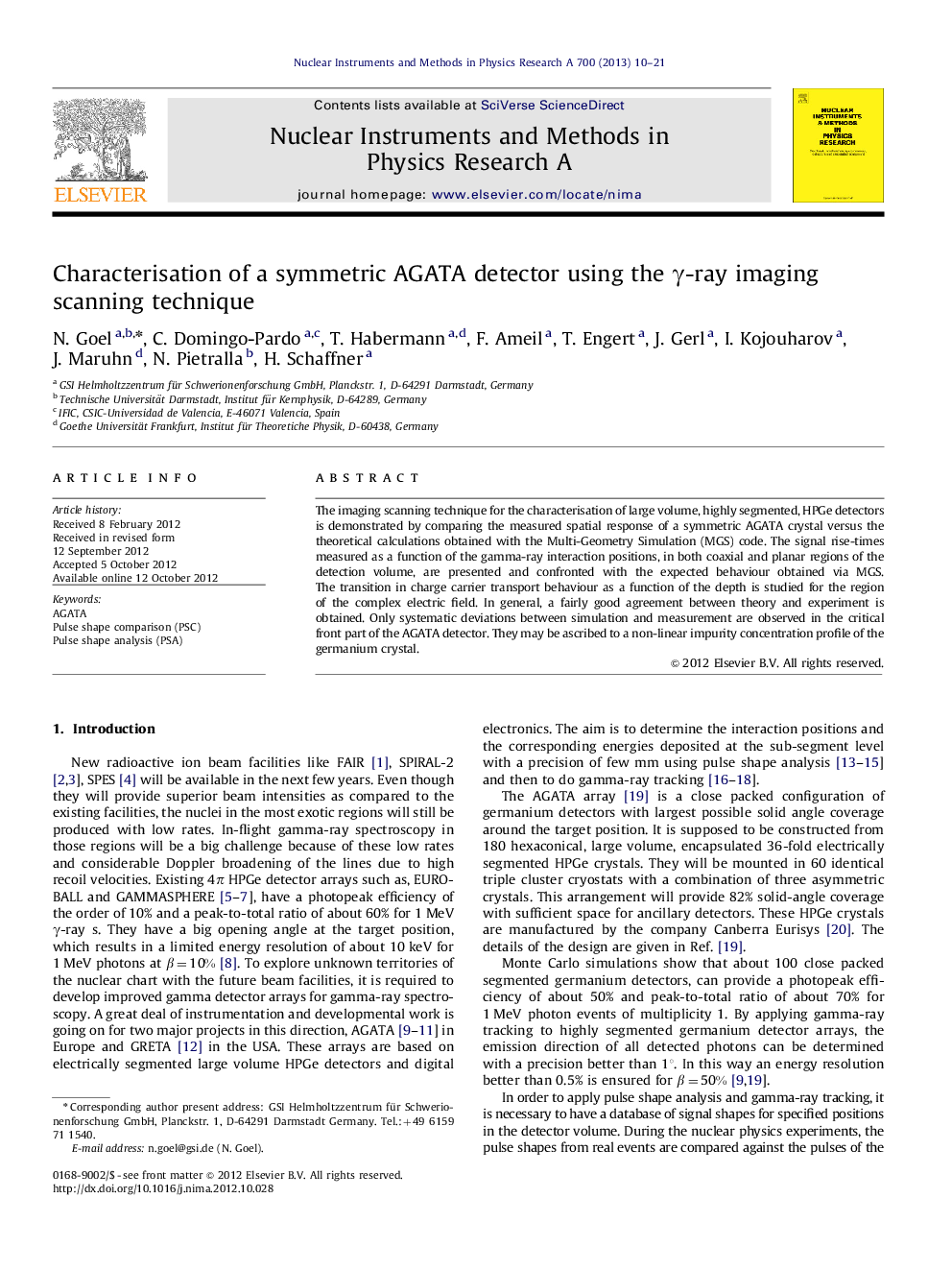| Article ID | Journal | Published Year | Pages | File Type |
|---|---|---|---|---|
| 1823394 | Nuclear Instruments and Methods in Physics Research Section A: Accelerators, Spectrometers, Detectors and Associated Equipment | 2013 | 12 Pages |
Abstract
The imaging scanning technique for the characterisation of large volume, highly segmented, HPGe detectors is demonstrated by comparing the measured spatial response of a symmetric AGATA crystal versus the theoretical calculations obtained with the Multi-Geometry Simulation (MGS) code. The signal rise-times measured as a function of the gamma-ray interaction positions, in both coaxial and planar regions of the detection volume, are presented and confronted with the expected behaviour obtained via MGS. The transition in charge carrier transport behaviour as a function of the depth is studied for the region of the complex electric field. In general, a fairly good agreement between theory and experiment is obtained. Only systematic deviations between simulation and measurement are observed in the critical front part of the AGATA detector. They may be ascribed to a non-linear impurity concentration profile of the germanium crystal.
Keywords
Related Topics
Physical Sciences and Engineering
Physics and Astronomy
Instrumentation
Authors
N. Goel, C. Domingo-Pardo, T. Habermann, F. Ameil, T. Engert, J. Gerl, I. Kojouharov, J. Maruhn, N. Pietralla, H. Schaffner,
